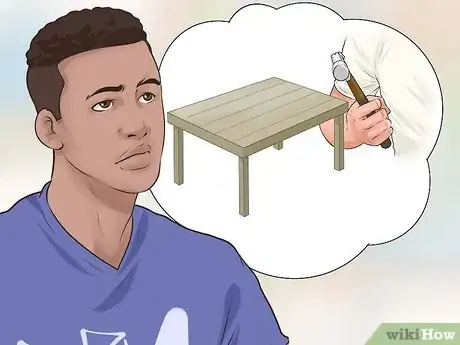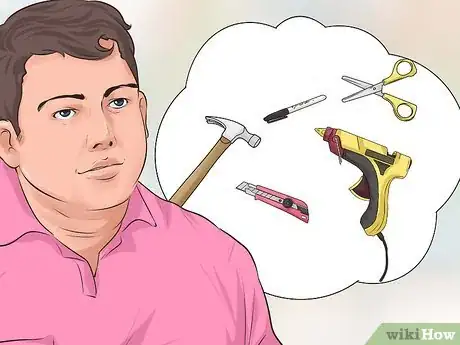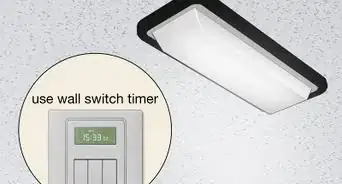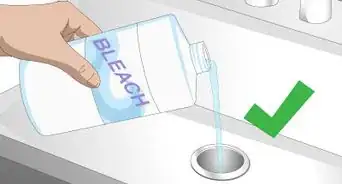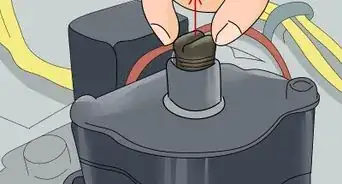wikiHow is a “wiki,” similar to Wikipedia, which means that many of our articles are co-written by multiple authors. To create this article, 21 people, some anonymous, worked to edit and improve it over time.
This article has been viewed 42,439 times.
Learn more...
DIY is a popular acronym that means Do It Yourself. Generally these sort of activities are supposed to be productive and useful, rather than just an arts and crafts project. However, there is a huge range of options when it comes to a finding a DIY project. Everything from building a tree house to changing a tire could fall under the DIY heading. Choose what matters to you.
Steps
Thinking DIY
-
1Recognize the purpose of something that you DIY. DIYs aren't only a way to spend your extra time, but also a chance to produce something helpful or useful. Consider what projects you have in your life that needs to be accomplished, and then assess if you might be able to do it on your own. You don’t always need to pay for help and it can be a lot of fun. [1]
-
2Look around for things to improve. For example, maybe you have lots of old canvas and you want to repair it. Start paying attention to the things you need done around your house and you’ll find a ton of inspiration for DIY projects.Advertisement
-
3Write down your ideas. Now you’ll have a whole list of DIY projects to get going on. You’ll also be able to accomplish your work more systematically.
-
4Adopt the DIY attitude. Being willing to do it yourself means you already have certain state of mind. However, you have to understand that your projects might not come out perfectly - especially if you are a beginner. You'll gain a serious sense of satisfaction by finishing the project on your own but don't expect it to look like the photos on Pinterest. As you get better your final outcome will look better too. Your first few projects are learning experiences, not failures.
Choosing Your DIY Project
-
1Choose a project that is within your wheelhouse. [2] Recognize your skills and abilities but also your limitations. If you already have some carpentry skills then maybe it isn’t so crazy to try to build your own coffee table. However, if you’ve never used a power tool before you might want to start with something more simple. Don’t put yourself in danger. [3]
- If you're going to be doing your DIY project with kids, make sure to take their skills and ages into account, too. Younger kids will need more supervision and shouldn't handle things that might be dangerous, such as sharp scissors or hot glue.
-
2Decide your timeframe. If you just want to spend an afternoon doing something productive then you probably shouldn’t try to paint your entire house. Maybe you can repaint one wall in your living room, but the whole house is probably a little aggressive. Choose a project that fits with your timeframe so that you don’t end up with a half finished project that never gets done. [4]
- A lot of projects will have a designated time frame, but a lot of this depends on your skill level. Be prepared to be flexible.
- If you're planning to DIY a gift, make sure you give yourself enough time to fix any mistakes you might make. Projects rarely turn out perfect on the first try.
-
3Pick a project that you need to do anyway. There are always going to be a ton of projects that seem fun to do, but a great way to narrow down your options is to figure out what chores are absolutely necessary. Once you’ve figured that out, you can decide if you’re capable of doing the task on your own. [5]
- Changing your oil is a great example. Everyone needs to change his or her oil on their vehicle, but maybe you can learn how to do it yourself and skip the cost!
- DIY holiday or Christmas decorations are a fun thing to try because there's no pressure. A few mistakes just add to the "homemade" look!
Accomplishing Your DIY Project
-
1Find the right tools. This will obviously vary dramatically based on what kind of project you choose to do. Look for correct the tools. The most common tools for DIY projects are glue guns, power tools, hammer, wrench, scissors, Sharpies, cutters, pen and stationery.
- Make sure you consider how often you're going to use the tools. That way you can decide between buying a tool, renting it, or even borrowing it from a friend or neighbor. You don't need to buy an upholstery stapler if you're only going to re-cover one chair. You can rent big tools from hardware stores, whereas smaller purchases like glue guns and scissors are a cheaper investment.
-
2Gather the appropriate materials. It’s always a good idea to have your materials available before you start the project. Once you start having to run out to the home improvement store every twenty minutes you’ll really lose focus on your project. Make a list of the materials that you need and gather them all before you begin. [6]
-
3Plan a specific crafting area. DIY can make a mess. It's a good idea to have a specific area designated for your project. Large tables or even outdoor patios are good spaces. If you're going to be using paint or glue, or creating sawdust, consider spreading newspaper or trash bags down to collect the waste.
-
4Look for instructions. Websites like Wikihow are filled to the brim with detailed, step-by-step instructions on how to accomplish basically anything. Instructions are considered a given when it comes to DIY projects. There’s no shame in looking up how to do something if you’re lost. It’s just a matter of taking advantage of the resources that are available to you. Use the bar at the top of the Wikihow website to search for your particular project. Here are just a few ideas:
- Make a Pencil Holder with Popsicle Sticks
- Build a Bench
- Make a Bud Vase from a PVC Pipe
- Build a Birdhouse
- Make a Windmill
Community Q&A
-
QuestionWhat if I mess something up?
 Community AnswerIf you mess anything up, then the next step is to stop doing anything further for safety. Then review your steps and see if at any point things started to go wrong. Finally, back track to where you went wrong and redo it.
Community AnswerIf you mess anything up, then the next step is to stop doing anything further for safety. Then review your steps and see if at any point things started to go wrong. Finally, back track to where you went wrong and redo it. -
QuestionWhat sort of DIY is suitable for children
 Community AnswerCall your local Home Depot and ask if they do "Kids clinics." Most do them on the first Saturday of the month at 9 a.m. The clinics and materials are provided for free.
Community AnswerCall your local Home Depot and ask if they do "Kids clinics." Most do them on the first Saturday of the month at 9 a.m. The clinics and materials are provided for free.
References
- ↑ http://www.doityourself.com/your-projects/
- ↑ http://www.architectureartdesigns.com/the-coolest-34-diy-projects-you-need-to-make-this-spring/
- ↑ http://www.doityourself.com/your-projects/
- ↑ http://www.architectureartdesigns.com/the-coolest-34-diy-projects-you-need-to-make-this-spring/
- ↑ http://www.diynetwork.com/how-to
- ↑ http://www.diynetwork.com/how-to
About This Article
To DIY, take a look around your home to see if there's anything that could use an update or some extra flair. For example, maybe you've been wanting a coffee table in your living room, or perhaps your walls could use a fresh coat of paint. Once you've decided on a project, do some research online to figure out what kind of tools and materials you'll need. Then, make a trip to the store and pick everything up so you don't have to go back out once you get started. To learn how to choose a DIY project that isn't too complicated, scroll down!




